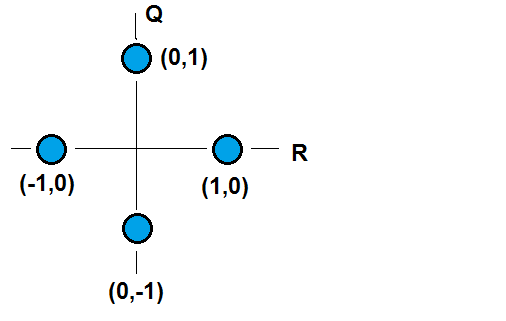QAM Modulation

In a "Quadrature Amplitude Modulation" communication scheme, binary states are encoded using weighted sums of sine and cosine waves. Consider the following idealized message signal:
The message signal consists of a "reference" sinusoid with weight , and a "quadrature" sinusoid with weight . The constellation above shows four states, corresponding to 2 bits per symbol (a unique 2-bit binary state for each allowed configuration of ).
Suppose the actual signal consists of the ideal signal combined with an error signal (due to channel noise, etc.):
Define "signal energy" as the Euclidean norm of the reference and quadrature components. Assume that a noisy symbol will be misinterpreted by the receiver if it is closer (distance-wise) to another symbol in the constellation, than to the intended symbol. Given the QAM constellation above, what minimum error signal energy will cause the receiver to misinterpret a QAM symbol?
The answer is 0.7071.
This section requires Javascript.
You are seeing this because something didn't load right. We suggest you, (a) try
refreshing the page, (b) enabling javascript if it is disabled on your browser and,
finally, (c)
loading the
non-javascript version of this page
. We're sorry about the hassle.
0 solutions
No explanations have been posted yet. Check back later!